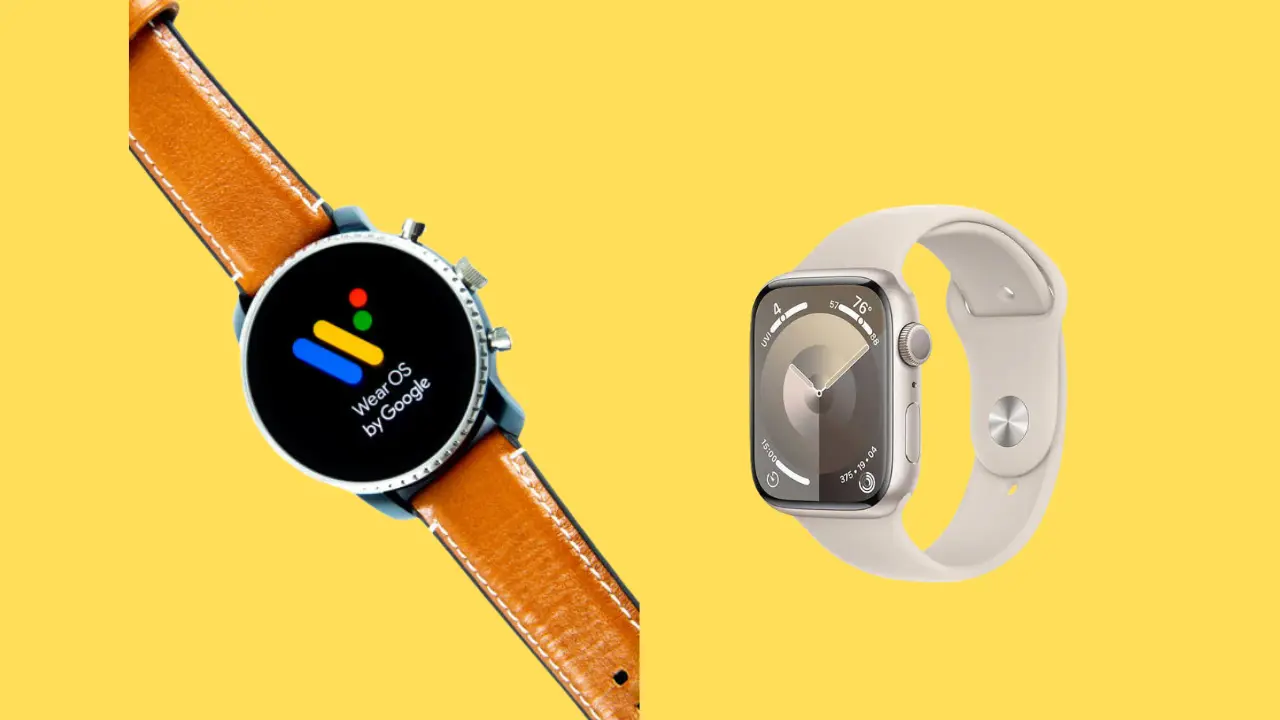Apple Watch has long been the de facto standard in smartwatches (and wearable tech in general), leading to many people disregarding Google’s Wear OS as a sub-par option. However, not everyone has an iPhone, and Wear OS has improved significantly lately. In fact, there are a few reasons why people might want to consider a Wear OS smartwatch over an Apple Watch. Let’s investigate.

Wear OS’ Superior Device Support
Let’s get the most obvious feature out of the way first. One of the Apple Watch’s limiting factors is the fact that it only works with an iPhone. That’s by design, and not necessarily because Apple wants to keep its ecosystem closed, as many people believe. The fact is that the Apple Watch was never intended to be a standalone device; instead, it’s a companion to the iPhone.
However, this means you can’t pair an Apple Watch with an Android phone and, knowing Apple, that’s unlikely to change.
For those who were wondering, yes, there is a workaround that can make your Apple Watch receive calls from an Android phone, but it’s not supported by default and still requires an iPhone to set it up. And, let’s be honest—taking calls on a watch looks cool, but it doesn’t even scratch the surface of what a smartwatch should do.
Wear OS, on the other hand, supports a wide range of phones and operating systems. Of course, Android is its primary focus, and it will work with any phone running Android 6.0 or later (except those running Android Go), which covers approximately 90% of the world’s Android user base.
However, Wear OS also works on iPhones running iOS 13 or later, though some features might be limited, depending on the watch model.
In other words, people who use an Apple Watch can’t switch to any phone that isn’t an iPhone if they want to keep using the watch. On the other hand, Watch OS users can switch between phones as much as they like without losing the ability to use their smartwatches.
Wear OS is More Customizable than the Apple Watch
Watches are practical devices, and even more so in the case of smartwatches. But most people are also concerned about aesthetics. They want a watch that matches their style.
The Apple Watch is quite customizable, with different watch faces, tiles, and straps, but there are some limitations. You are limited to the faces and tiles that Apple approves, and there are only so many options in terms of straps.
Like its father, Android, Wear OS is open. In other words, various brands can use the operating system on their own devices, giving us a more comprehensive range of options. Examples include the Samsung Galaxy Watch, Google’s own Pixel Watch, the Mobvoi TicWatch, and the OnePlus Watch. Other brands are also switching to Wear OS, like the popular Fitbit range.
The added benefit is that some of these brands offer incredible specifications, like the TicWatch Pro 5, which has a battery that lasts up to 80 hours! That’s insane compared to the Apple Watch’s estimated one charge per day.
So, since each device manufacturer can add their own stylistic touches to their smartwatches. Since you can use Wear OS with most modern smartphones, users have more freedom to choose a watch that matches their style and technical requirements from any brand they like.
Google Assistant vs. Siri
As much as Apple users hate to admit it, Siri is overdue for a significant upgrade. It’s functional enough and can get most things done, but it tends to answer most questions with “I found this on the web,” which requires additional interaction from the user to find the answer they were looking for.
Though there are rumors of an upcoming Siri upgrade, Google Assistant has done a better job of keeping up with the times. Though it will also display results from the web, it will read out the answer that seems most likely to be correct.
In the context of smartwatches, that’s a significant consideration. Siri is perfectly integrated with the Apple Watch, as Google Assistant is with Wear OS devices. Siri on the Apple Watch requires more user interaction in cases where you’re asking it a question, while Google Assistant will give you an answer without you having to tap on the screen at all. Its convenience outshines the Apple Watch.
It’s also worth mentioning that brands often integrate their own digital assistants with Wear OS, like Bixby on the Samsung Galaxy Watch, to augment the Google Assistant’s capabilities.
Reverse Charging Options
Apple doesn’t allow users to charge the Apple Watch from their iPhones (a process known as reverse charging). This means you must carry a charger with you if there’s a possibility that your watch’s battery could run out during the day.
Some other manufacturers allow a great feature known as reverse charging that allows you to charge compatible wireless charging devices using your phone’s battery power. They can charge other phones, wireless earphones, or even smartwatches.
A notable example is Samsung, which will let you charge your Wear OS smartwatch using reverse charging through its PowerShare functionality. It’s important to remember that this feature is device-specific, so not all brands and models offer it, but Wear OS gives you the option, while Apple doesn’t.
Google Ecosystem Integration
The Apple ecosystem is renowned for its interoperability, and the Apple Watch fits seamlessly into the mix. However, many people miss the fact that the Google ecosystem is also quite expansive.
Though it doesn’t have features like Apple’s Hand-Off, Google’s apps tend to work better and run more smoothly on its own operating systems. In other words, your experience with apps like Google Maps and YouTube Music could be smoother on a Wear OS device than on an Apple Watch, depending on the Wear OS version and watch model.
This won’t be an advantage for everyone. Still, if you’re already highly invested in the Google ecosystem and consistently use Google apps rather than those offered by Apple, Wear OS could be a better option for you.
Before you go…
We’ve seen that a significant Wear OS feature is its ability to work on different phones from various manufacturers. But what about using a smartwatch without a phone? Is that even an option? Read this post to find out!

